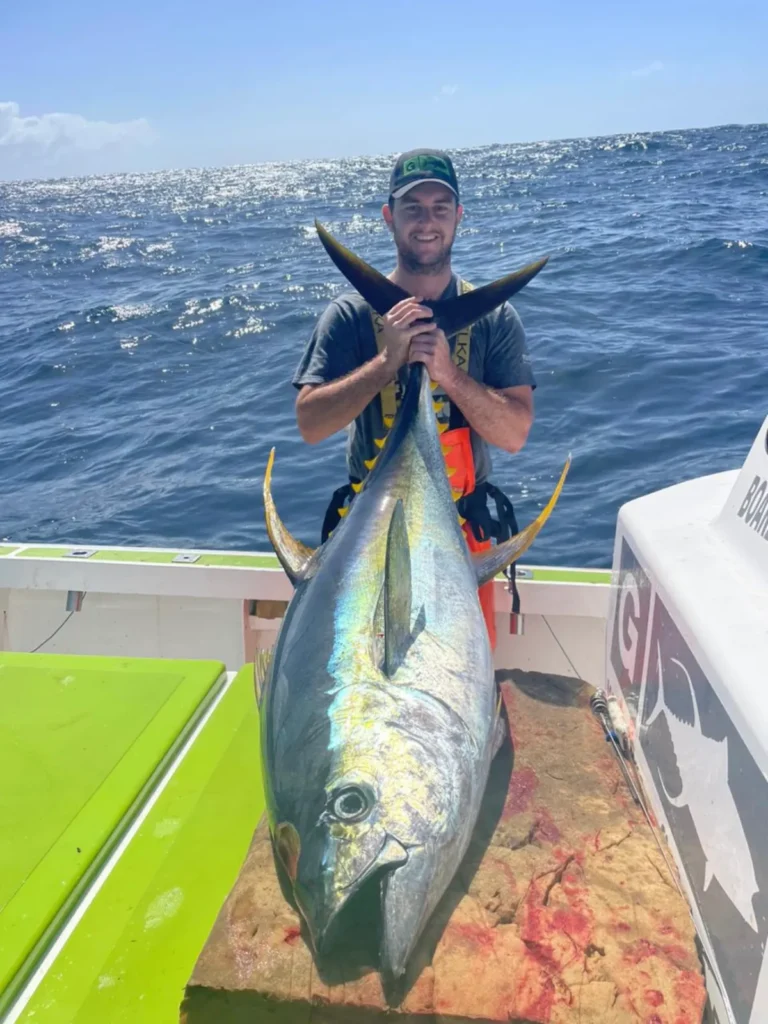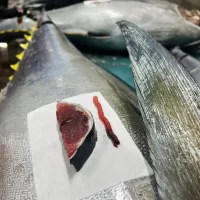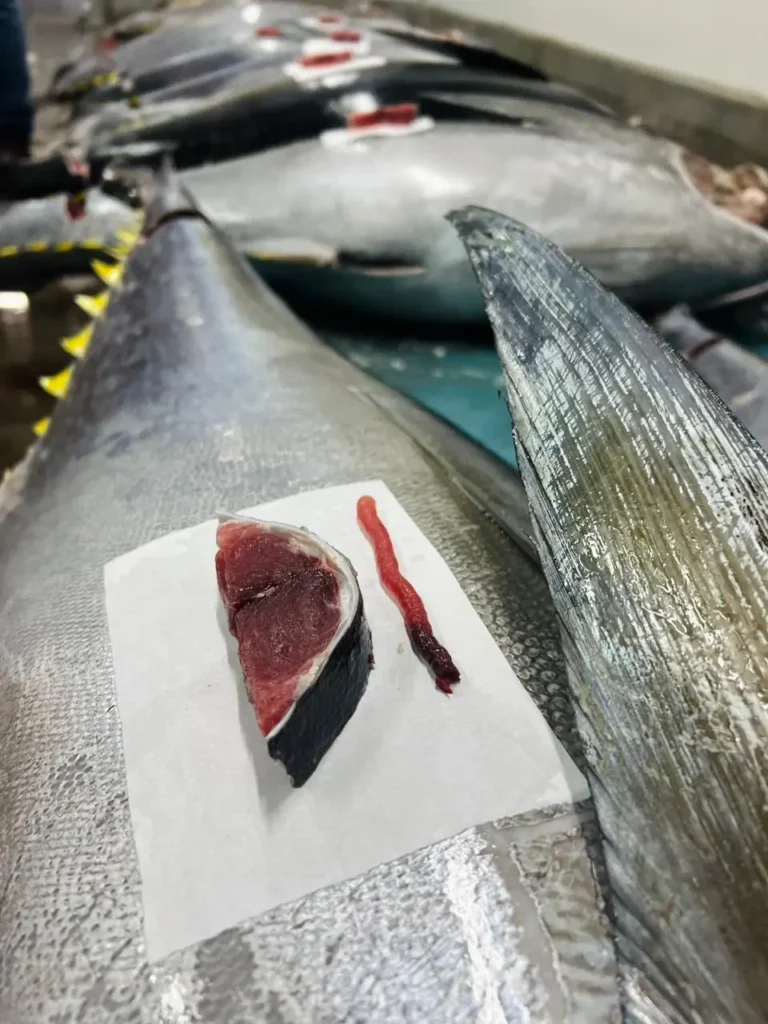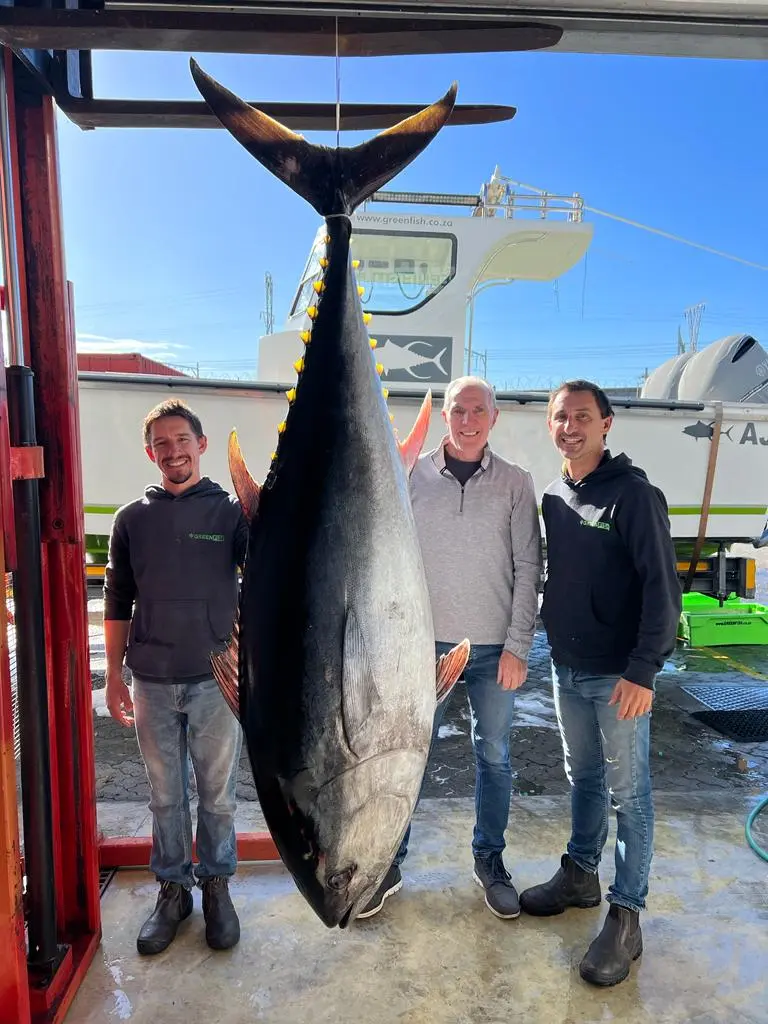Our Sword & Tuna
Sword & Tuna Product List
Featured Video
Yellowfin Tuna
Yellowfin tuna, also known as yellowfin amberjack or Thunnus Albacares, is a species of fish belonging to the jack family. It is widely distributed in temperate and subtropical waters around the world, including the Pacific, Atlantic, and Indian Oceans.
Yellowfin tuna has a streamlined body with a bluish-green or silver coloration on the upper body and a yellowish tint on the lower body and fins, which gives it its name. It can grow up to 1.8 meters (6 feet) in length and weigh around 40 kilograms (88 pounds).
Known for its fast and powerful swimming abilities, yellowfin tuna is a highly migratory fish that often forms schools near offshore reefs, rocky areas, and underwater structures. It is a pelagic predator, feeding on a variety of prey such as small fish, squid, and crustaceans.
Due to its delicious taste and firm, flavorful flesh, yellowfin tuna is highly sought after by commercial and recreational fishermen. It is a popular target for sport fishing and is also commercially harvested for its meat, which is often used in sushi and sashimi preparations. Yellowfin tuna is considered a prized game fish and is appreciated by seafood enthusiasts for its rich flavor and versatility in various culinary dishes.

South African yellowfin is considered a delicacy and is highly prized for its firm, succulent flesh and rich flavor. There are several factors that contribute to the unique taste and texture of South African yellowfin:
1. Habitat: Yellowfin is found in the cold waters off the southern coast of Africa, where the Benguela Current flows. This current brings nutrient-rich water from the Antarctic, which supports a diverse ecosystem of marine life, including yellowfin.
2. Diet: Yellowfin feed on a variety of marine organisms, including small fish, squid, and crustaceans. Their diet gives their flesh a rich, savory flavor and a firm texture.
3. Fishing methods: South African yellowfin is usually caught using traditional line-fishing methods, which involves using a rod and reel. This method minimizes damage to the fish, ensuring the flesh is not bruised or damaged.
4. Freshness: Yellowfin is usually caught and packaged on the same day, ensuring that it is as fresh as possible. This enhances the flavor and texture of the fish, making it even more delicious.
5. Culinary tradition: In South Africa, yellowfin is often prepared with local herbs and spices, such as coriander, ginger, and garlic. These flavors complement the natural taste of the fish, creating a unique and delicious dish.
Overall, the combination of habitat, diet, fishing methods, freshness, and culinary tradition make South African yellowfin a sought-after delicacy that is enjoyed by seafood lovers around the world.











